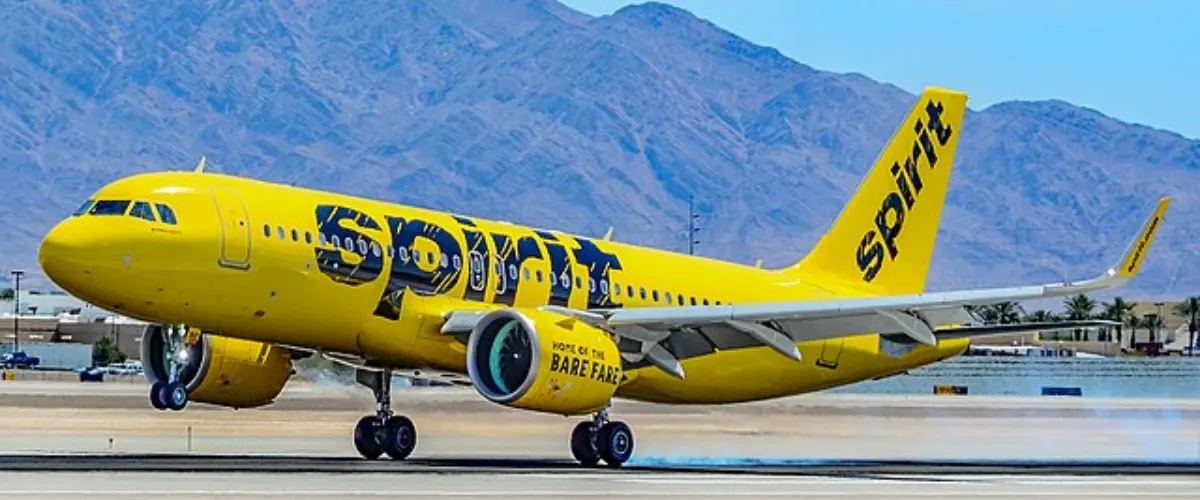This week, Spirit Airlines, the Florida-based ultra-low-cost carrier (ULCC), announced significant cuts to its network as it struggles to survive bankruptcy. Once known for its rock-bottom fares, Spirit is now grounding planes, laying off staff, and pulling service from nearly a dozen cities.
The changes highlight how Spirit, a pioneer of the no-frills flying model, is fighting to restructure amid post-pandemic challenges, increased competition, and the collapse of its proposed merger with JetBlue.
Table of Contents
Cities Losing Spirit Airlines Service
Spirit confirmed that several cities will no longer see its bright yellow jets. Among the most immediate losses is Oakland International Airport, where Spirit flights are departing for the last time this week.
In addition to Oakland, Spirit will exit Hartford, Connecticut, and Minneapolis, Minnesota, while shelving plans to launch service in Monroe, Georgia. The airline says these decisions are part of a broader restructuring strategy designed to focus on profitable routes.
For passengers, the cuts mean fewer budget-friendly options. “It made it pretty simple to kind of fly into the Bay Area from Las Vegas,” said one disappointed traveler in Oakland.
The Consumer Impact: Fewer Choices, Higher Fares
Industry analysts warn that Spirit’s downsizing could lead to higher airfares across affected routes. Henry Harteveldt, an airline analyst, explained, “Spirit is the incredibly shrinking airline right now. Unless there are other low-cost airlines that compete with Spirit on these routes, consumers should expect to pay more.”
Spirit’s departure means travelers who relied on its low fares will be forced to turn to major airlines, often at higher prices. This trend could reduce competition and limit affordable travel options for budget-conscious flyers.
Layoffs, Pay Cuts, and Fleet Reductions
As part of its restructuring, Spirit plans to furlough one-third of its flight attendants, seek pilot pay cuts, and ground part of its fleet. The airline will reduce flights by nearly 25%, shrinking its overall presence in the U.S. domestic market.
The restructuring reflects deeper industry shifts. Post-pandemic, many passengers have gravitated toward airlines offering more comfort, reliability, and perks—leaving carriers like Spirit struggling to retain loyal customers.
Competitors Move In
While Spirit pulls back, other airlines are seizing the opportunity. United Airlines recently announced 15 new routes, many designed to fill the gaps Spirit is leaving behind. CEO Scott Kirby commented, “The ULCC model is going away. Some airlines will fail. Some new ones will come up.”
Meanwhile, Frontier Airlines, Spirit’s closest ULCC competitor, has dismissed speculation of a merger. Frontier CEO Barry Biffle argued that the industry has too much capacity, suggesting Spirit’s cuts may be part of a larger market correction.
Financing Brings Hope
Despite doubts about its future, Spirit received a boost this week in the form of hundreds of millions of dollars in financing, which the airline called “significant progress” in its bankruptcy restructuring. In a memo to employees, Spirit’s Chief Commercial Officer insisted the cuts were “necessary changes to position the airline for the future.”
The airline maintains that it can adapt and survive by streamlining its operations and focusing on profitable markets. However, with growing skepticism among analysts and travelers alike, Spirit faces an uphill battle to restore confidence.
The Future of Low-Cost Flying
The Spirit Airlines crisis raises larger questions about the viability of the ultra-low-cost model in the U.S. aviation market. As consumers demand more value—better seating, fewer fees, and improved reliability—ULCCs may struggle to compete with legacy carriers that can offer both affordability and comfort.
For now, Spirit passengers will need to adjust to fewer options and potentially higher prices, while the rest of the airline industry watches closely. The coming months will determine whether Spirit can reinvent itself—or whether the U.S. market is moving beyond the bare-bones flying experience that defined the ULCC era.
Join us on Telegram Group , Instagram for the Latest Aviation Updates.
Also read: Spirit Airlines Flight Ordered to Change Course After Getting Too Close to Air Force One – AeroTexts

